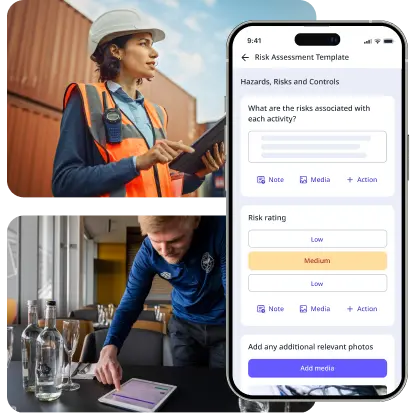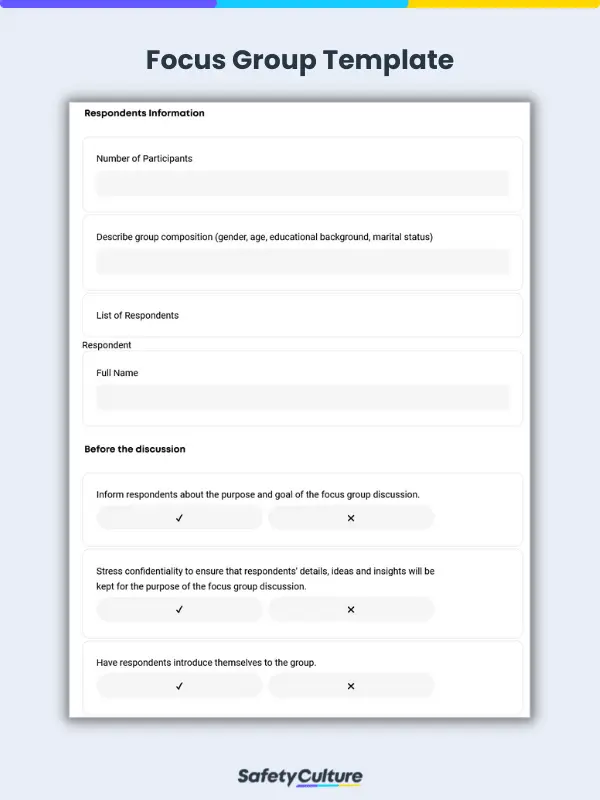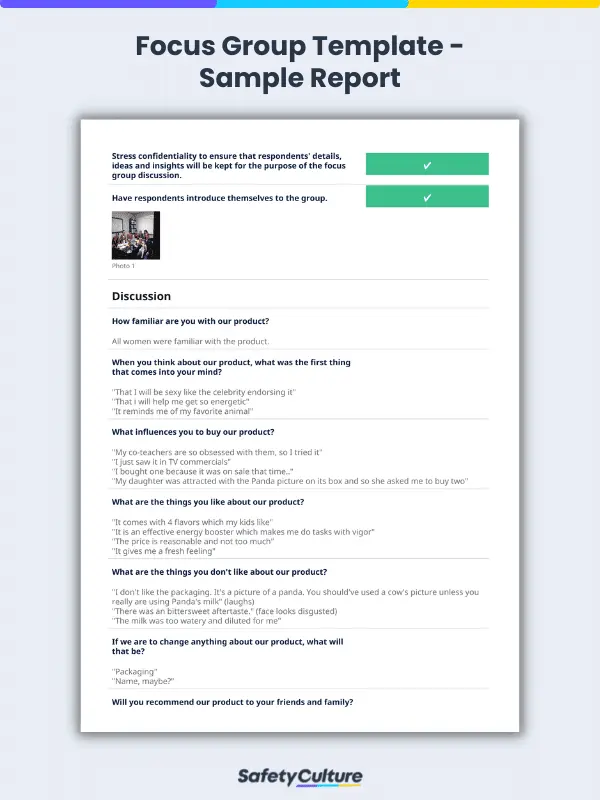What is a Focus Group Template?
A focus group template is the go-to tool of research teams for collecting qualitative data derived from open group discussions. Through quantitative and qualitative research, these forms can help researchers understand consumer behavior for making certain decisions. Focus group moderators can use this template to create more in-depth and meaningful conversations.
Why Conduct FGDs?
Focus group discussions (FGDs) work best when moderators have a clear picture of the flow of conversation. They can achieve a more streamlined data collection process with the help of a structured template.
But how exactly does this research tool help in the process?
A focus group template provides moderators with a framework on how the session will proceed from start to finish. It serves as a guide for directing where the conversation will go by outlining important questions about a product, service, or topic. By having a clear and cohesive session format, FGD moderators can facilitate meaningful discussions and get the answers they need without missing a single item.
What to Include in a Focus Group Template
A comprehensive focus group template should include the following elements:
- Respondent information – participant names, headcount, demographics, and other relevant details
- Introduction – focus group discussion (FGD) guidelines, confidentiality notice, and other relevant information before proceeding with the group discussion
- Discussion proper – engagement, exploration, and exit questions about the product, service, or research topic
- Completion – comments, name, and signature of the focus group moderator
Focus Group Questions Examples
Questions on FGDs often vary depending on the topic being discussed, but most of them follow a particular sequence: engage, explore, and exit. Here are a few sample FGD questions to help you get started.
Engagement Questions
- What is your favorite product, service, or program?
- When you think about this product, service, or program, what was the first thing that comes into your mind?
- How familiar are you with this product, service, or program?
Product or Service Questions
- What influences you to buy our product or service?
- What are the things you like or dislike about our product or service?
- If we were to discontinue a program, which one should we discontinue and why?
Exit FGD Questions
- Will you recommend our product to your friends and family? Why or why not?
- Is there anything we should know about why you purchased our product or service?
How to Write a Focus Group Report
Documentation is an important aspect of focus group discussions. After all, this report presents the results of the FGD and allows organizations to take meaningful action based on the data you collected.
The writing process becomes easier when you have a ready-made template. Here are the steps in creating a report using a focus group template.
1. Write the program information.
A focus group report typically starts with a cover page providing basic details about the FGD conducted. This part should contain the focus group topic, date and time, and moderator name.
2. Briefly introduce the FGD participants.
After writing the basic information about the FGD, the next step is to identify and describe the attendees involved in the session. For this section, you can include the following details:
- Number of participants
- Group composition – age, gender, educational background, marital status
- Complete list of participants – name and other relevant information
3. Describe the background and purpose of the FGD.
It’s also important to include a brief description of the FGD’s goals, purpose, and background. This section allows moderators and evaluators to understand what the FGD is about and how it will be conducted. You can also insert a confidentiality statement, ensuring that the information and insights from the participants are kept solely for the purpose of the FGD.
4. Record the responses of participants.
After completing all necessary details about the FGD, it’s time to proceed with the attendees’ responses. This section serves as the heart of the focus group report, for it contains the answers and insights from the participants.
It’s best to base this section on the flow of questions provided during the FGD. Doing so makes it easier to follow how the discussion went and better understand their answers. Be sure to be as detailed as possible when documenting these responses, including photos and videos as evidence.
5. Sign off the focus group report.
Lastly, wrap up your focus group report with the moderator’s name and signature. It verifies who’s responsible for the FGD and establishes accountability across the research team. In this section, you can also include comments and recommendations to improve the program.
FGD Example
Now that you know how to write a focus group report, here’s an example of what it looks like when completed using a digital FGD template and exported as a PDF:
FAQs about Focus Group Templates
How many questions should a focus group template have?
What is the format for a focus group template?




